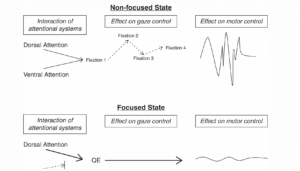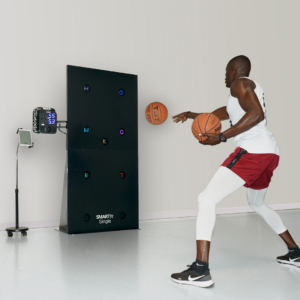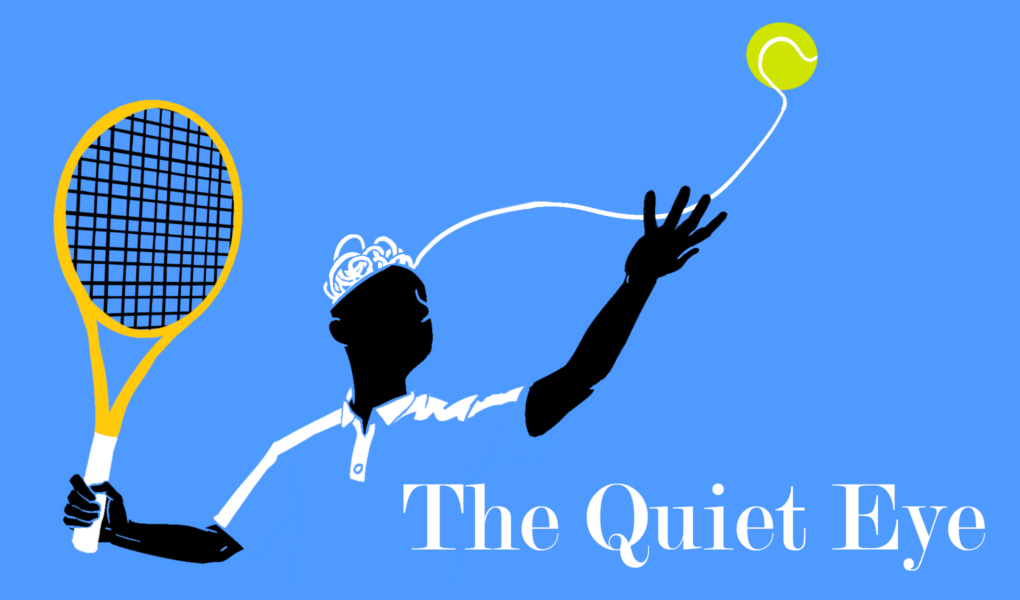Physical Training in Athletes
Professional athletes are seen as the epitome of excellence in sports. To reach such status, athletes train for years, sacrificing family time, holidays, and many other monumental memories. They test their bodies by pushing themselves to their physical limits. Michael Jordan, a legendary basketball player, was known to start his training day with 8 a.m. weightlifting followed by an 11 a.m. team basketball practice. He would stay for an extra hour to practice his free throws, go for a three-mile run, and finally have his second team basketball practice at 4 p.m. Jordan put himself through intense training, pushing his body to its limit. Many athletes follow a strict training regime similar to Jordan’s, for example, NFL defensive end JJ Watts, swimmer Michael Phelps and tennis player Roger Federer push their bodies to their physical limits in order to be the best. Following this training regime every day for years puts extreme strain on the body physically and mentally. Athletes followed this training structure for decades because sports were only viewed from a physical point of view.
Mental Fitness in Sports
In recent years, more importance has been placed on taking care of athletes’ mental health and stability at a level equal to the care placed on their physical health. The link between an athlete’s cognitive processing and athletic achievements is becoming more relevant in this new age of technology and innovation. The integration of technology in the world of sports enables trainers to track and record data, analyze it, generate programs and algorithms to decipher the data, and then translate the data into useful information to create a holistic training program for their athletes. This approach to athletic training prioritizes physical and mental fitness through the integration of cognitive processing exercises with physical training exercises. Focusing on improving an athlete’s fitness from these two different directions is a unique and effective method to ensure that athletes are thoroughly prepared to compete at the highest level.
The Science Behind Decision Making in Sports
Playing a sport is a series of actions by an individual or team geared towards a specific goal. In tennis, a pair of opponents rally a ball back and forth; each player swings their woven racket with the goal of striking the tennis ball over the net with the hope that their opponent is unable to return the ball resulting in a point being scored. Points are not won by luck; players calculate every move and action that will result in the highest probability of a positive outcome of scoring a point. The moment right before an athlete makes a decision, when they are zoned in and focused on the task at hand, is known as the ‘quiet eye’, which is a term coined by Gershon Tenenbaum of Florida State University in his Sport & Exercise Psychology Lab. In this lab, Tenenbaum and his team research how an athlete’s cognitive processing affects their physical performance [5]. Another example of a ‘quiet eye’ is when athletes analyze all possible options for the trajectory of a ball, who to pass to, their opponents’ position, the angle the ball is coming towards them, or the distance to their target. In these milliseconds, the brain works at an astronomical pace to decipher all possible options and make a calculated decision. Tenenbaum’s research findings conclude that the longer the ‘quiet eye,’ the more accurate and better the performance of the specific athlete, with the caveat of taking too long to make a decision which could result in a reverse effect [5]. The goal is for each athlete to find the perfect balance between extending their ‘quiet eye’ duration and making fast-paced decisions for an optimal outcome.
Understanding the ‘Quiet Eye’ and Human Information Processing
The way in which athletes process information is the foundation behind the idea of the ‘quiet eye.’ The ‘quiet eye’ stems from how humans process information. Tenenbaum’s lab utilizes eye-tracking technology to track the subject’s eye movements to map where and what the subject’s attention is focused on [5]. For example, when eye-tracking technology detects a tennis player’s eye gaze shifting away from their target, it recognizes that the tennis player’s attention is elsewhere. During a tennis player’s ‘quiet eye’ moment, they process the speed, angle, and trajectory of the ball approaching them and decide what angle, power, and direction to return the ball. When their gaze shifts away from the target, the subject’s attention also shifts. The longer the subject’s eyes are shifted away from the target, the lower the ‘quiet eye’ and the less accurate the outcome. The most significant difference in ‘quiet eye’ duration is between intermediate and expert-level athletes. For professional athletes, the time their gaze shifts away and back to the target is shorter, meaning they have a longer duration of the ‘quiet eye’ compared to intermediate athletes, who have a slower shift-back time and ‘quiet eye’ duration.
The Role of Brain’s Attention Network
An understanding of the mental attention network is needed to better understand why a player’s attention shifts. The frontal lobe is the area of the brain that processes high-level cognitive functions and there are two different pathways through which information is sent through to reach the frontal lobe. The first pathway is known as the ‘Dorsal Attention Network’ (DAN), which sends information from the occipital lobe, which processes visuals, to the frontal lobe via the parietal lobe, which processes sensory information [4]. The second pathway is the ‘Ventral Attention Network’ (VAN) which goes from the occipital lobe, through the temporal lobes which process objects, emotions, and perception, to the frontal lobe [4]. Having a longer ‘quiet eye’ hinders attention interruptions arising from the VAN. This activates and strengthens the DAN. Strengthening the ‘quiet eye’ sends information more frequently through the DAN path by suppressing distractions that would travel through the VAN path. Going back to the tennis example, during the ‘quiet eye’ moment, if there is a leaf floating in the air, the player’s eye gaze might shift away from the ball and toward the leaf; how the player processes this information can result in a more focused ‘quiet eye.’ Professional athletes have strengthened their brains by utilizing cognitive-motor training to process information through the DAN pathway, which is seen by the faster speed at which their eye gaze shifts back to the ball. As seen in the figure below, the ‘Non-focused State’ is when an athlete’s eye gaze is attracted elsewhere and causes more inconsistencies in their motor control. During the ‘Focused State,’ there are no changes in attention due to the strengthened cognitive processing which utilizes the DAN, leading to more consistent motor control. Through cognitive-motor training, athletes can increase the duration of the ‘quiet eye,’ resulting in more accurate and successful outcomes.

Figure 1: A representation of the proposed links between attentional networks, the quiet eye, and movement control.
Source: Adapted from [1]
Incorporating Cognitive Motor Training
Cognitive Motor Training (CMT) is the intersection of cognitive and motor control training, which simultaneously trains brain functionality and physical actions. “In athletes, the goal of CMT is to augment sports performance by targeting specific skills which are transferable to competitive sports and improve general cognitive abilities” [8]. According to “Effects of a Cognitive-Motor Training on Anticipatory Brain Functions and Sport Performance in Semi-Elite Basketball Players,” motor and cognitive training exercises performed simultaneously, known as dual task (CM-DT) training, is shown to be a more beneficial method of CMT rather than motor and cognitive skills being practiced separately [6]. This type of dual training is most effective for dynamically changing sports and requires athletes to make decisions quickly. Dynamically changing sports such as soccer, tennis, basketball, etc., all require players to make quick decisions based on the constantly changing environment; this quick decision-making is pivotal to the outcome of the game. It is crucial for athletes to be able to go through the mechanics of the sport while making the right calculated decisions utilizing the ‘quiet eye,’ which can be improved through CMT training. In Evans and Stanovichm’s study “Dual-Process Theories of Higher Cognition,” it was found that CM-DT training had the most considerable effect on accuracy performance because CM-DT “stimulate[s] higher cognition function as attention facilitating response accuracy” [2]. Incorporating sport-specific physical exercises rather than general physical training leads to a more accurate outcome and more concentration when performing specific drills.
Evidence shows that CM-DT is the more effective way to improve professional athletes’ abilities. Highly skilled physical trainers utilize this training methodology to better prepare their professional athlete clients. However, for intermediate or novice athletes looking to improve their skill sets, it is challenging to know where to start with CM-DT.
Technological Implementations for CMT
Many companies are now curating CM-DT training programs that anyone, from a senior citizen rehabilitating from a hip replacement surgery to a professional athlete training for the Olympics, can directly implement into their training schedule. Switched On is a mobile app that “provides randomized visual and/or audio cues that users associate with different actions or movements, forcing them to use their mental muscles to perceive an external stimulus, process the information to decide on the appropriate action, and use their physical muscles to react as quickly and efficiently as possible” [3]. When visual or auditory stimuli are projected, the user processes this information through the VAN pathway. With more cognitive training, the user will start to filter out these distractions, and now the stimuli can be processed through the DAN pathway to maintain a better focus on the task at hand. Switched On is an example of a company using software to implement CMT training programs. In contrast, SmartFit uses hardware and software by “placing participants in an interactive training arena where they engage at their level of capability by making physical contact with sensitized target screens placed in front of and around them” [7]. In a SmartFit environment, users perform sport-specific motor tasks while completing a series of cognitive exercises such as image and sound recognition, math and spelling questions, and memorization games. As seen in the image below, the user is listening for the SmartFit device to announce a letter, and then the user needs to pass the basketball to the letter’s location on the SmartFit board as quickly as possible. Each company that is rolling out athletic training programs using CMT-based technology all have the common purpose of strengthening performance through mental and physical training.

Figure 2: Basketball player training with SmartFit training device
Source: Adapted from [7]
The Importance of Mental Fortitude in Sports
Physical training can only prepare the body until a certain point– mental strength propels performance to a new level. NFL quarterbacks play under extreme pressure; as soon as they snap the ball, they have seconds to scan the tens of yards in front of them as defensive linemen are charging at them. It is the quarterback’s responsibility to calculate where his receivers are, which receiver is open and has the best possibility of catching the ball and scoring a 1st down, and how far and at what angle to throw the ball. In dynamic sports, infinite, constantly changing factors affect the decision-making process and players only have a few seconds, if they are lucky, to decide what the right play is–this is the ‘quiet eye.’ Whether you are an avid sports fan, shoot hoops for fun on the weekends, are recovering from an injury, or are a professional athlete, understanding what the ‘quiet eye’ is and how to strengthen it can give you an upper edge to outperform your competitors.
Works Cited
[1] Damian Farrow and Joseph Baker, Routledge Handbook of Sport Expertise. Taylor and Francis, 2015. doi: 10.4324/97813157766675.
[2] Evans, J. and Stanovich, K., 2013. “Dual-Process Theories of Higher Cognition”. Perspectives on Psychological Science, 8(3), pp.223-241.
[3] Glatt, R., 2022. A Narrative Review on the Neuroscience of Athletic Performance & The Incorporation of Cognitive Demands into Agility Training. [ebook] SwitchedOn. Available at: <https://www.scribd.com/document/522516550/SwitchedOnA-White-Paper-The-Neuroscience-of-Athletic-Performance-and-the-Incorporation-of-Cognitive-Demands-into-Agility-Training> [Accessed 9 September 2022].
[4] J.-C. Lebeau, S. Liu, C. Sáenz-Moncaleano, S. Sanduvete-Chaves, S. Chacón-Moscoso, B. J. Becker, and G. Tenenbaum, “Quiet Eye and performance in sport: A meta-analysis,” Journal of Sport and Exercise Psychology, vol. 38, no. 5, pp. 441–457, 2016.
[5] K. Weir, “Lab work: The athletic brain,” Monitor on Psychology, Mar-2019. [Online]. Available: https://www.apa.org/monitor/2019/03/athletic-brain. [Accessed: 06-Sep-2022].
[6] S. Lucia, V. Bianco, L. Boccacci, and F. Di Russo, “Effects of a cognitive-motor training on anticipatory brain functions and sport performance in semi-elite basketball players,” Brain Sciences, vol. 12, no. 1, p. 68, 2021.
[7] SMARTfit. 2022. functional-and-brain-training-explained. [online] Available at: <https://www.smartfit.rocks/functional-and-brain-training-explained/> [Accessed 9 September 2022].
[8] Taatgen, N., 2013. The nature and transfer of cognitive skills. Psychological Review, 120(3), pp.439-471.




